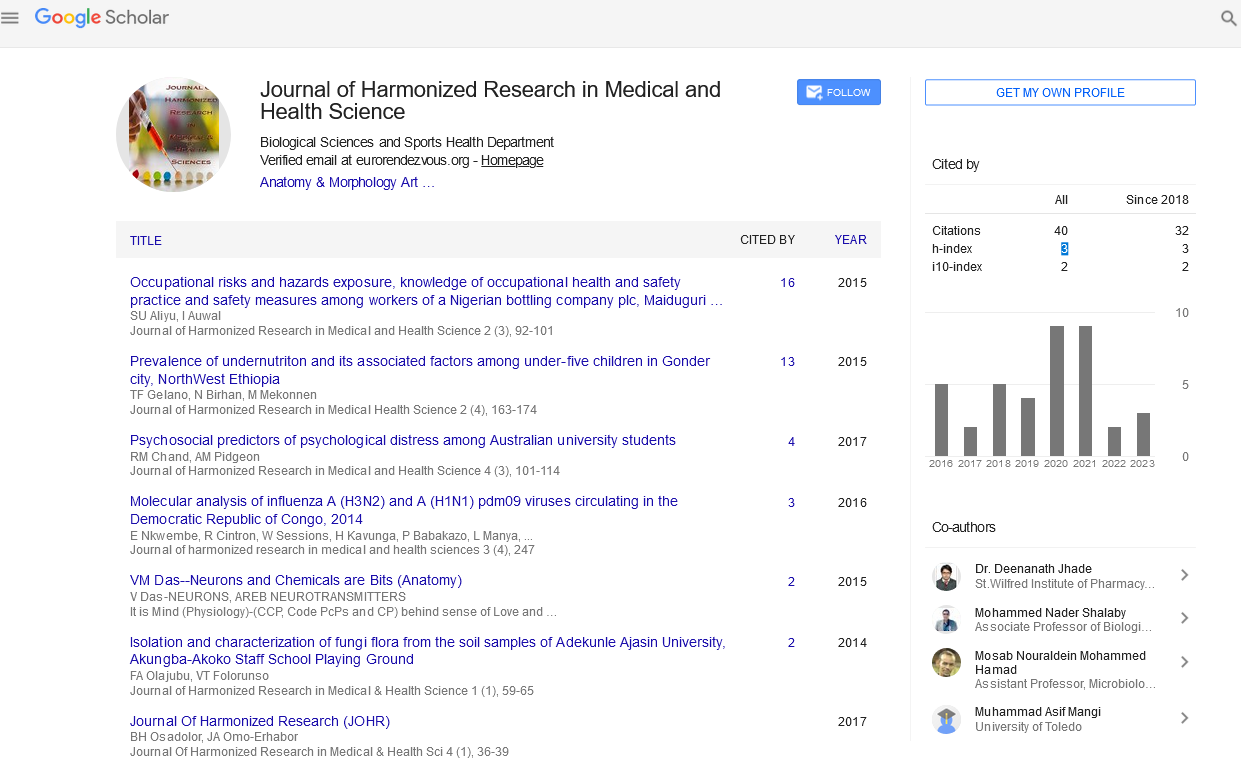Perspective - (2022) Volume 9, Issue 4
IMPACTS OF HEMATOLOGICAL FUNCTION DISEASES AND CONDITIONS
Kwan Lee*Received: Nov 01, 2022, Manuscript No. JHRMHS-22-83834; Editor assigned: Nov 04, 2022, Pre QC No. JHRMHS-22-83834 (PQ); Reviewed: Nov 24, 2022, QC No. JHRMHS-22-83834; Revised: Dec 02, 2022, Manuscript No. JHRMHS-22-83834 (R); Published: Dec 12, 2022, DOI: 10.30876/2395-6046.22.9.140
Description
Hematology is a significant medical specialty with numerous distinct subjects because blood is fundamental to practically all of the body’s processes as well as a blood test can disclose further about our physical status than just about any other type of examination. Hematologists place a lot of emphasis on the bones because the bone marrow is where blood cells are created. Another crucial topic is the clotting, or hardening, of the blood, as this prevents humans from blubbing to life from even minor wounds. Additionally, there are other deadly blood disorders, such as leukaemia and anaemia. The study of hemoglobin in connection to wellness and disease is known as hematology. Blood has vital functions for maintaining human health, such as: Carrying essential elements including oxygen and nutrients around the body, assisting in maintaining the body’s water and acidity balance and aiding in disease prevention, numerous bodily systems, including the lymphatic vessels, a system of organs and tissues that eliminates waste, can be impacted by blood vessel disorders. Blood illnesses could be caused by problems with the organ in which the body makes the majority of the blood cells. Hematology aims to understand the causes of these problems, how they affect a people’s ability and how to treat them. Hematological illnesses can be divided into two categories: benign and malignant blood disorders. Hemoglobinopathies like thalassemia and sickle- cell anaemia, other anemia and coagulopathies like hemophilia are examples of non-malignant blood disorders. Genetic disorder and Von Willebrand syndrome, both of which are brought on by low concentrations of coagulation factors in the blood, are other clotting disorders with hereditary a etiologic. Diet and lifestyle choices, among other things, may contribute to the development of other non-cancerous conditions such anaemia and pulmonary embolism.
A hematological condition called spontaneous thrombocytopenic purpura is characterized by an unusual decline in low platelet concentration, which leads to internal bleeding, bloody noses, bleeding gums and bruises. The term “myelodysplastic syndromes” refers to a group of tumors in which the bone marrow’s blood stem cells are unable to develop into different types of mature blood cells. Due to the lack of red and white cells in the blood, this causes refractory anemia, recurrent cytopenia, chronic myelomonocytic leukemia and several other malignancies. A type of cancer known as multiple myeloma causes an overabundance of blood cells in the body. Hematology, thrombocytopenia and leukopenia are the results of an absence of red blood cells, platelet and white blood cells as a result of an overabundance of plasma cells in the blood. The osteocytes and osteoclasts that maintain bone health can also be harmed by multiple myeloma, leading to bone deterioration and fractures. For the diagnosis of hematological and non- hematological disease states, blood tests offer useful information. One of the most frequent blood tests used in disease diagnosis is a complete blood count. The haematological parameters evaluated in a complete blood count include a number of white and red cells, haematocrit levels, hemoglobin red blood cell size, blood fraction, differentiation white blood count and various other red Blood Cell Indices (CBC). Full blood counts are employed to diagnose inflammatory illnesses, blood-related malignancies, anemia, and infections Information concerning bleeding and clotting issues can be gleaned from platelet counts. Coagulant assays like prolonged prothrombin and fractional thromboplastin time can also be used to monitor and diagnose clotting-related diseases like hemophilia. These tests can be used to track the effectiveness of anticoagulation or anticlotting medications. One of the less common hematological procedures, the marrow test analyses cells from the marrow to identify illnesses such multiple myelomas, hematologists provide a range of clinical diagnostic procedures and treatments for a range of illnesses, from cancer to anaemia, that primarily impact the blood. A doctor may send a patient to an oncologist even if there is no reason to suspect they have cancer because of the linkages between haematology and oncology. For their patients, hematologists who specialize in non - malignant inflammatory diseases use a variety of blood smear images, tests, and genetic diagnostic tools to provide an accurate diagnosis. They occasionally assist with the long-term treatment of individuals with hematological illnesses. Malignant hematological condition specialists also need to be well-versed in other areas, such as infectious diseases. Additionally, they can concentrate on particular treatments like bone marrow transplants, which are frequently used to treat blood cancers. Another area of specialization in the treatment of malignant hematological disorders is transfusion medicine.










